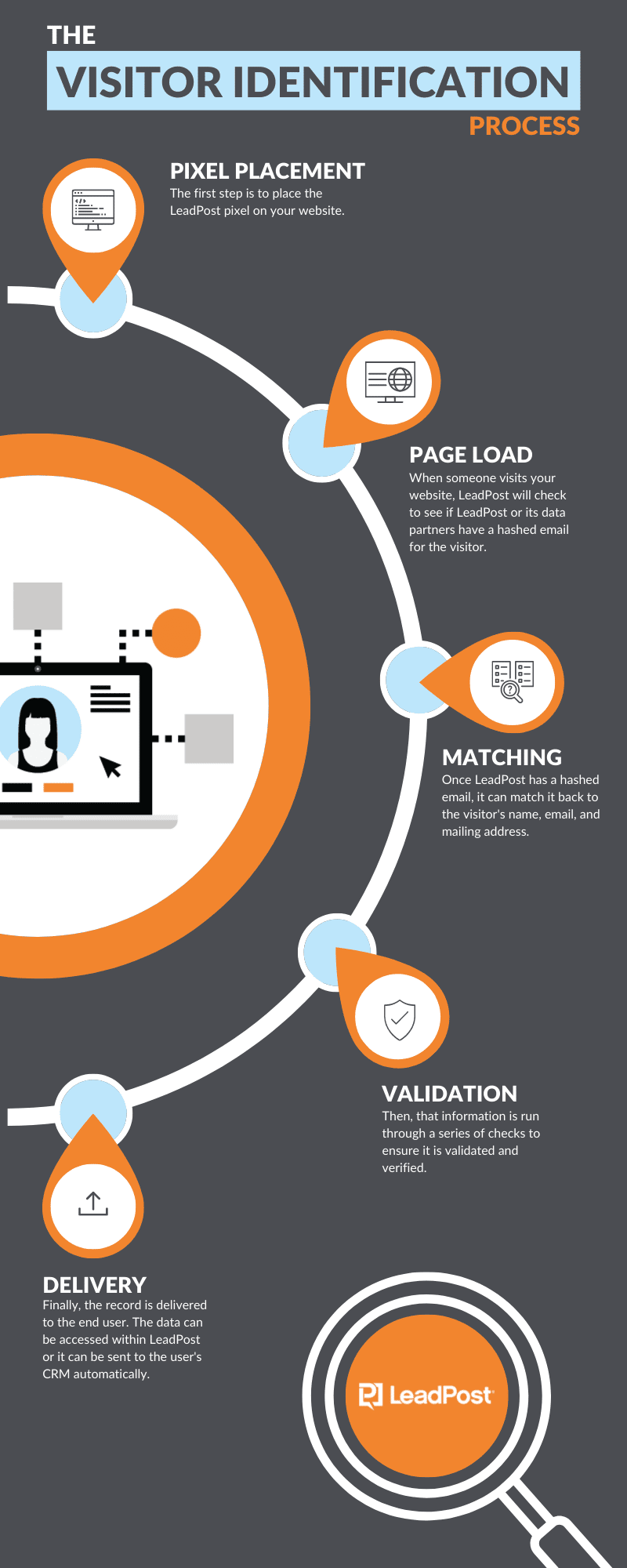Even if you’ve done everything you possibly can to optimize your B2B lead generation process, chances are you still wish there was more you could do. After all, no one has a 100% conversion rate, right? One way to generate more leads is to identify B2B website visitors who don’t convert.
B2B Website Visitor Identification
Website visitor identification is an effective way to discover high-intent prospects. They probably wouldn’t be visiting your website if they weren’t interested in what you have to sell. But how do you find out who your visitors are?
Those dots on your Google Analytics dashboard aren’t leads. Not until you know how to contact them at least.

How to Turn B2B Website Visitors into Leads
In order to turn those line graphs into leads, you’ll need some software. There are three types to choose from.
1. Track Visitors You Know
The first way to identify B2B website visitors won’t work with anonymous visitors. Tools like HubSpot use cookies to remember your website visitors if they convert. Then, when they come back, HubSpot will track their behavior and report on information like what pages they visited.
2. Find Out Where Your Anonymous Visitors Work
The second way to identify visitors to your B2B website doesn’t tell you exactly who they are, but it will give you a hint. Tools like Leadfeeder and Lead Forensics can determine where some of your visitors work. Based on the company, the software will suggest some people for you to contact.
3. Find Out Who Your Anonymous Visitors Are
The third tool to identify your anonymous visitors will tell you who visited, where they work, and how to contact them. LeadPost can tell you who visited, what pages they visited, and their email address. Then, you can automatically retarget them by email, social media ads, display ads, and direct mail within the platform’s integrated retargeting suite.
How B2B Visitor Identification Works
As you can see in the infographic below, visitor identification starts with a pixel placed on your website. Then, using cookie- and IP-based data, your visitors are matched back to their name, email address, and mailing address. Then, business data is added so that you have a complete B2B record.

See for Yourself
The best way to decide what makes the most sense for your business is to try the different options yourself. Then you can see firsthand what each tool provides. You can try LeadFeeder, HubSpot, and LeadPost for free to see what they offer.
You can get 125 free B2C leads or 25 free B2B leads with a free trial of LeadPost. Give it a shot and see what you think!
